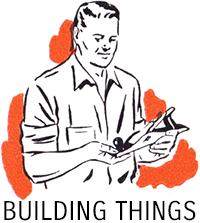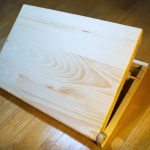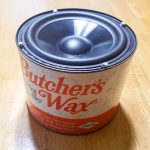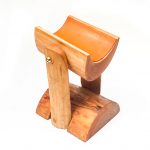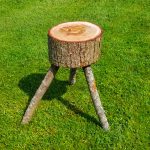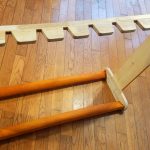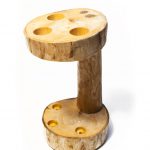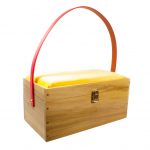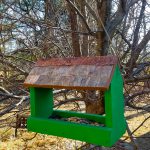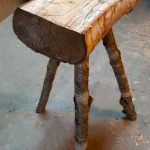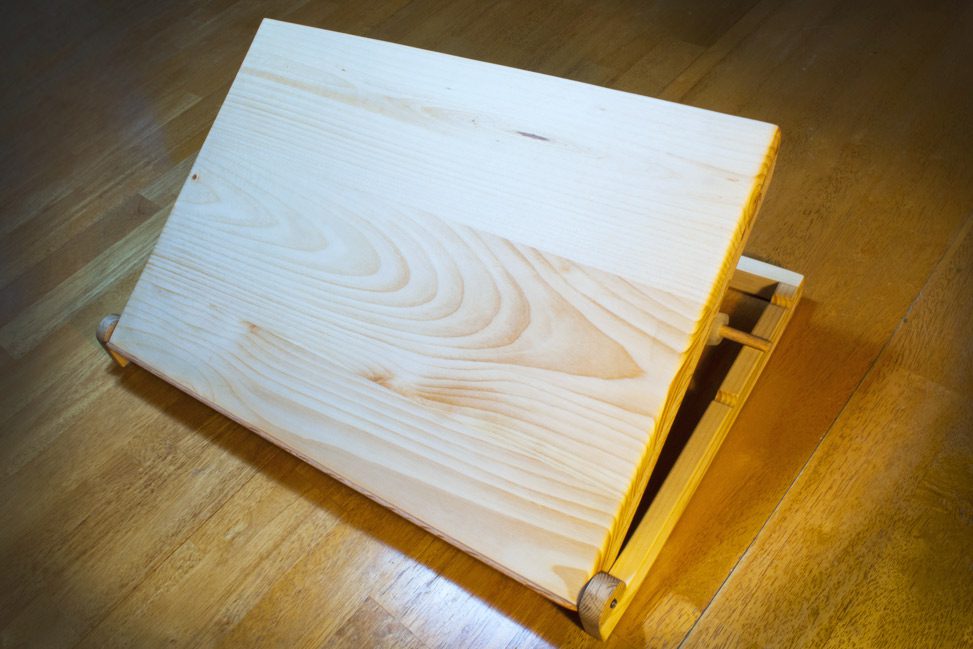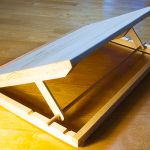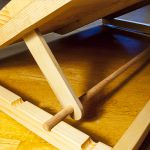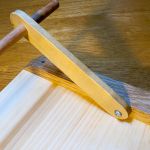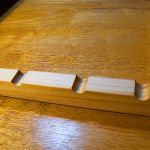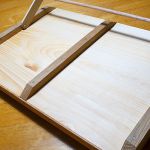I needed a way to keep paper things that I’m working on, reading, cutting, at an angle and out of the way of the overhead light that causes glare on shiny stuff. For years I would prop stuff up on books, or whatever’s nearby. I decided to remedy the situation in a more permanent style.
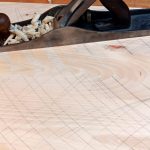 The board is sized to fit my cutting mat, which is 13″ x 19″. I gave it a half-inch on each side, except for the bottom, 13.5″ x 20″. As always, I didn’t purchase anything specifically for this, just used what I already had. I’d like to have used a hardwood for the board, but I didn’t have anything that was thick enough. I did have a pine 1×5, however, and I cut it up and glued it up. I figured that I’d usually have a cutting mat on it anyway. It didn’t feel stiff enough after it was a panel, I could flex it a bit, so I decided to add some oak battens on the back.
The board is sized to fit my cutting mat, which is 13″ x 19″. I gave it a half-inch on each side, except for the bottom, 13.5″ x 20″. As always, I didn’t purchase anything specifically for this, just used what I already had. I’d like to have used a hardwood for the board, but I didn’t have anything that was thick enough. I did have a pine 1×5, however, and I cut it up and glued it up. I figured that I’d usually have a cutting mat on it anyway. It didn’t feel stiff enough after it was a panel, I could flex it a bit, so I decided to add some oak battens on the back.
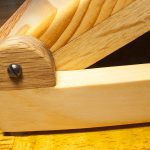 For the front pivot, I could have made the bottom frame so that it allowed me to use hinges, but I didn’t like how it was looking in my mind’s eye. So I added some oak “ears” on the sides, drilled holes and used long pan-head screws through them and into the board.
For the front pivot, I could have made the bottom frame so that it allowed me to use hinges, but I didn’t like how it was looking in my mind’s eye. So I added some oak “ears” on the sides, drilled holes and used long pan-head screws through them and into the board.
To hold the board an an angle, I was originally planning to make two “legs” that were screwed on the outside of the sides of the board and chisel spots for them to sit into the frame. That would have worked, probably, but I thought that it might not be secure enough, that it might be easy to knock one of the legs out of its home. So I started messing with the idea of the legs on the inside of the board sides, which would be up against the battens, holding a dowel, which would sit in grooves in the frame. I made the legs from a piece of poplar that I had that seemed to be a good thickness.
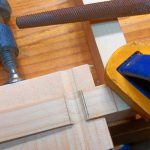 I rigged up the board with scrap wood until it sat at the angle that felt best to me, which turned out to be around 30°, and made the necessary marks for attaching the legs and where the dowel would land on the frame. I made two other marks, the highest and lowest that the legs would allow. I made the grooves for the dowel to sit in with a file. Clamped on some pieces to either side to protect against blowout.
I rigged up the board with scrap wood until it sat at the angle that felt best to me, which turned out to be around 30°, and made the necessary marks for attaching the legs and where the dowel would land on the frame. I made two other marks, the highest and lowest that the legs would allow. I made the grooves for the dowel to sit in with a file. Clamped on some pieces to either side to protect against blowout.
I then had to run to the store to get a 3/8″ dowel. I lied about only using what I had.
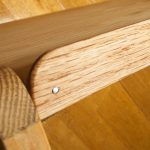 Ran a strip of oak through the thickness planer for the bottom lip. Rounded the edges on the belt sander. I didn’t glue this on, just used nails. I wasn’t sure of how much overlap to leave and figure I’d make another one if I didn’t get it right.
Ran a strip of oak through the thickness planer for the bottom lip. Rounded the edges on the belt sander. I didn’t glue this on, just used nails. I wasn’t sure of how much overlap to leave and figure I’d make another one if I didn’t get it right.
Sanded a bit, not too much, up to 120, used some spar varnish/linseed/mineral spirits finish. Also rubbed on a bit of paste wax. No need to go too crazy, this ain’t fine furniture.
Oh, I also put some feet on it, help with sliding around. Matthias Wandel said to remove the adhesive that’s on those things and use hot glue, so that’s what I did.
